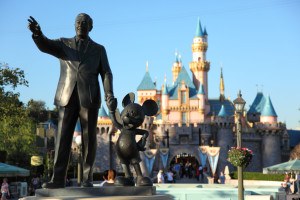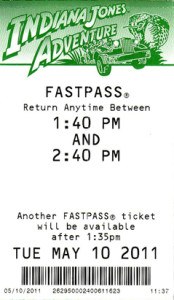Making Dreams Come True…With Operations Management

How Disney’s innovative operations management translates into magical experiences for customers, and large profits for the company
The Walt Disney Company, an iconic staple in American culture, has been able to build an operating model that enables the company to deliver on its promise to customers: “to make magical experiences come alive.”
Overview of the company:
The Walt Disney Company is a diversified global entertainment company. Originally founded in 1923 as an animation studio, it later diversified into film, TV, and theme parks. Today, Disney has five business segments: Media Networks, Studio Entertainment, Consumer Products, Interactive, and Parks and Resorts.
Disney’s Parks and Resorts segment, which represents the core of the company’s business model, includes Disney’s resorts across the globe. The company wholly owns and operates the Walt Disney World Resort in Florida and the Disneyland Resort in California. Outside the US, the company has large ownership stakes in parks in Paris, Hong Kong, and Shanghai (under construction). Disney also earns royalties from Tokyo Disneyland Resort.
Disney’s Parks and Resorts Business Model:
Since its inception, Disney’s promise to the customer has been to “create happiness through magical experiences.” Disney’s parks and resorts deliver an immersive experience, where rides and attractions are integrated with famous stories from blockbuster Disney movies.
Parks and Resorts represent a large portion of Disney’s overall revenue (~30%) and profit pool (~20%). Revenue sources include sales of admission tickets, food, beverage, and merchandise, and cruise vacation packages, rentals of vacation club properties, and charges from hotel nights. Operating expenses include marketing and sales expenses, cost of merchandise, food, and beverage, cost of vacation club units, labor, depreciation, and infrastructure costs.
Aligning the operating and business models:
With very high expenses (both operating and capital) required to build and maintain such elaborate theme parks, it is critical for Disney to maintain a massive scale at each park in order to be profitable. Luckily, it has been able to do so. Disney operates the busiest theme parks in the world, and by a long margin. In 2013, their 11 parks attracted 132.5 million guests through all parks, which is more than double the closest competitor. Of the ten most-visited parks worldwide, nine are run by Disney.
Scale, however, comes with numerous challenges. As Disney’s success heavily depends on providing customers with consistently pleasant experiences, crowded theme parks and long waiting times pose a serious threat to their product. One of Disney’s most critical innovations, the Fastpass, addresses this dilemma.
Fastpass:
Disney’s Fastpass is a proprietary virtual queuing system first introduced in 1999. Fastpass allows customers to hold a spot in line for a popular ride, but instead of physically waiting in line, they can enjoy other attractions during their wait. Fastpasses are available at no additional cost for park guests.
When customers show up for an attraction, if the “stand-by” line is too long, they can choose to obtain a Fastpass from a machine outside the attraction. The Fastpass will show the time window (usually one hour) at which the guest can return later and use an expedited line to board the ride.
At each attraction that offers this service, a certain number of seats are set aside for Fastpasses everyday, and the rest is made available on a “stand-by” basis. The number of Fastpasses available is then evenly divided into five-minute time intervals. As customers obtain Fastpasses throughout the day, time intervals are depleted, pushing back the return time window. In the case of very popular attractions, such as Splash Mountain, Fastpasses are sometimes “sold out” early in the day, making the “stand by” line the only available options for customers. In most parks, only one or two Fastpasses can be held at any one time by one guest.
Fastpass essentially allows guests to “wait in line” for attractions, without physically waiting in line. This allows Disney to smoothen out the demand for the most popular rides over the course of the day, allowing customers to enjoy other different rides at the park without having to wait egregious amounts of time in lines.
Through innovations such as the Fastpass, Disney has made it possible to consistently provide a quality experience for its customers, while maintaining a scale critical to turn a profit. Delivering on their promise of “making magical experiences come alive” would not be possible without innovating with their operating model.
Sources:
- http://revenuesandprofits.com/how-disney-makes-money-understanding-disney-business-model/
- http://www.forbes.com/sites/csylt/2014/07/14/the-secrets-behind-disneys-2-2-billion-theme-park-profits/
- http://www.forbes.com/sites/allenadamson/2014/10/15/disney-knows-its-not-just-magic-that-keeps-a-brand-on-top/
- https://en.wikipedia.org/wiki/Disney%27s_Fastpass
- https://en.wikipedia.org/wiki/The_Walt_Disney_Company
- http://www.wdwmagic.com/attractions/space-mountain.htm
- http://geekdad.com/wp-content/uploads/sites/4/2015/05/Mickey-and-Minnie-4_15_DL_000432.jpg
- http://i.huffpost.com/gen/1090539/images/o-DISNEYLAND-RIDES-CLOSE-facebook.jpg
- http://disney-pal.com/Disneyland/images/indiana_jones_fastpass.jpg





It is funny for me to read this post now as just last year I was benchmarking Disney Parks for their customer service innovation techniques – 3 full days in the Magic Kingdom and countless parades later I was amazed with the level of operational hurdles they have to deal with.
One of the most surprising elements was how technologically advanced the whole park is! The Disney app, accompanied with the “Magic Bands” now link every aspect of the experience. They integrate the Fast Pass rides, restaurant reservations, payment and purchases, pictures taken at the park, they even act as your room key if you are staying in the resort…So now you just need to scan your wrist on any Disney outlet and the band can act as a key, a pass, a picture retrieval tool or even a payment tool.
From the back end of the Fast Pass, Magic Band and App, now Disney can gather any information or data they need about customer behavior and preferences as well as crowd movements.
It was impressive to see how one resort was able to do what everyone in the outside world is trying to do – enforce the use of technology and consolidate everything the customer may need on one traceable device.
I had no idea how the Fastpass worked! Thanks for the great explanation. I agree that this is a genius demand (arrival)-smoothing mechanism that has done wonders for both user experience and ride utility. The issues you highlighted are worrisome, but I think they are a small price to pay for all the great benefits and cost reduction. Probably the biggest barrier for Disney is making sure that tourists understand that Fastpass is free. I admit that I haven’t been to Disney since I was 15, but I had heard that there was a line-skipping device but thought you had to pay a premium for it. I think this concept goes along very well with Disney’s mission of “making dreams come true”. Great post!
To support their value proposition of “create happiness through magical experiences”, Disney has done exceptionally well in paying attention to every details that visitors could encounter in the park. From trash bins to gardening, Disney does not miss out any place that could have thrown you back into the reality – everything is so carefully curated to ensure a magical experience for every visitor. Services is also a key part of their operating model aligning with their business model.
With the growing visitors every year, lining up for attractions/rides has definitely been a pain point for many visitors. Fast Pass as well as mobile app (mentioned by one of the comments) are great invention to partially address this issue. However, I personally find Fast Pass not necessarily useful in shortening the average wait time, as often times visitors are limited to hold at most one or two fast pass in hand, or as you mentioned, really popular rides tend to be sold out early. Not sure how technologically feasible it is – maybe Disney can consider further explore their mobile app and use backend algorithm to optimise scheduling for popular rides after people input their favourite 3-4 rides.
In addition, Disney also focuses on product innovation to keep bringing new features that attract repeat customers. From opening up new theme parks and building new themed sites within the park, to creating new stores, shows and parades to keep up to date with the latest Disney movie releases, Disney never fails to “create happiness through magical experiences” for visitors.
Hey Qing,
Thank you for your enthusiast and enlightening note!
I wanted to bouce back on your post regarding Disney’s value proposition to “create happiness through magical experiences”. I can really and understand how this comes true in theme parks. I however wanted to go further: how do these 30% of revenues relate to the 70% remaining stakes? How do other Disney businesses (TV, movies,…) do related to the theme parks and contribute in looping a higher value creation? Besides, it seems that parks are not the main contributors of economic performance within the group, as revenue contribution is 1/3 lower than profit contribution. These figures raise the issue of how to relate a strong operating model, with a strong(er?) business model.
Thanks again for the post and comments! I learnt a lot!
Thanks for this magic note!
I find very interesting how Disney’s theme parks draw in customers. Other theme parks have to invest huge amounts of money in new rides and advertising so that customers feel the need to visit them – particularly those who have already been there. On the contrary, Disney organically attracts customers. Its “mind share” is so strong that the studio keeps the brand relevant by releasing new movies. So Disney makes money when it advertises itself!
Amazing to see this post, especially given that I will be visiting Disney in the up-coming break (super excited about that btw!). I last visited Disney as a kid in 1999 and I remember waiting for 90min queued up for Splash Mountain. The Fast Pass combined with the Disney app should enable a better experience but I agree with Qing: as people continue to figure out that its not a premium service (just as Ali did after reading this post), it will again become a zero sum game. People who previously could only beat queueing up by arriving early, now will have to do the same to ensure that they get a fast pass. However, Disney, over the years, has continued to evolve its operations to better serve the needs of its customers and I am sure they’ll find a way around it. Else, they can always release a new blockbuster hit and the 6yr old will ensure that daddy takes her to Disneyland in her next summer holidays.
Personally, I can’t wait to go there! Happy holidays 🙂